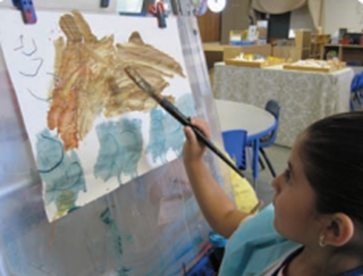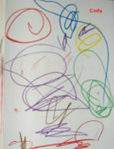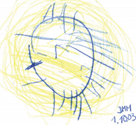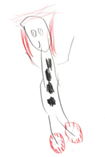10.4: Supporting the Visual Arts

|
|
|
|
- Invent and Discover to Create: Use different skills to generate works of art for functional, expressive, conceptual, and social/cultural purposes.
|
|
- Relate and Connect to Transfer: Make new connections to their own environments, cultures, and stories through the process of making art.
|
|
Developmental Sequence of Drawing
When provided with the right tools and a supportive environment, children between the ages of three and five show remarkable growth in the visual arts—progressing more rapidly during this period than at any other time before adulthood. Creativity and imagination peak around age four-and-a-half, a fact well known to experienced preschool teachers. The arts serve as a natural outlet for a preschooler’s creative thinking, and learning in this domain happens swiftly.
Of all the visual arts, children’s drawing ability is the most widely documented. When given the opportunity to make marks, children typically begin with vertical lines, then progress to mandalas—repetitive circular shapes. These evolve into figures with arms and legs, then faces, and eventually more detailed features such as hair, fingers, and eyes. Harvard University professor Howard Gardner famously called this stage “the birth of the potato person.”
This developmental trajectory is so reliable that pediatricians often assess cognitive progress at four- and five-year checkups by asking about the level of detail in a child’s human-figure drawings, rather than focusing solely on letters or numbers. Because children develop language and writing skills at varying rates, drawing ability often offers a more accurate reflection of intellectual growth during this stage.
 |
 |
 |
 |
Teachers can support children’s development of the visual arts foundations with the following:

Vignettes

Feedback/Errata